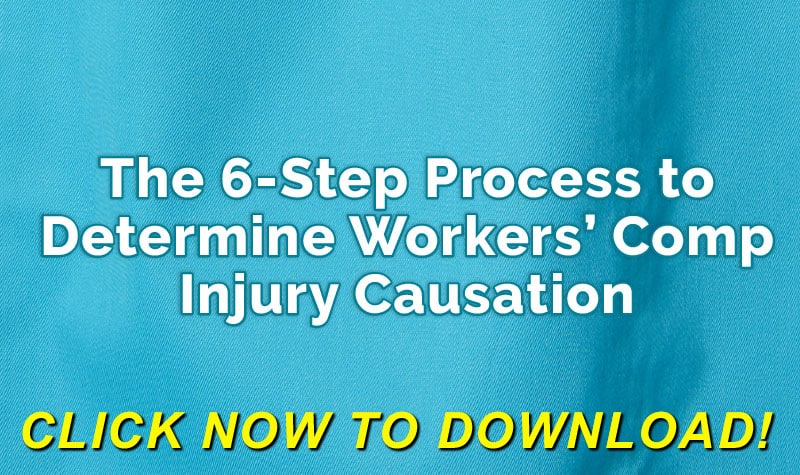
Who are the Interested Parties?
There are several groups of people the individual claim handler should consider involving when seeking to promptly get an injured employee back to work. By concentrating on respect, dignity, and effective communication, the goal of getting the employee back to work can be accomplished in a timely manner.
- Employee: The injured employee should be the center of attention following a work injury. Avoid being judgmental – put yourself in their shoes. Any work injury goes beyond physical scars and pain. There is a psychological component to consider;
- Defense Counsel: Work with the lawyer and their team to consider what tools should be used and how to use them. The focus should not be litigation. Instead, look for creative solutions to avoid conflict;
- Employer Representative(s): Every employer should have someone who concentrates their daily activities on getting employees back to work following a work injury. If the employer does not have someone in this position, the claim handler can be proactive by demonstrating how such a position and be effective;
- Health Care Providers: Constant interaction with this group is critical. Disputes frequently arise when they submit a request for additional care, which is not responded to promptly. This creates mistrust. Seek opportunities to direct the medical care immediately following a work injury through an employer-created Preferred Provider Organization (PPO).
Now is the time to engage all parties to get an employee back to work following a work injury.
Medical Care and Treatment Options
Claim handlers look for opportunities to get an employee into the proper medical program following a work injury. This can be accomplished via the guidance of an in-house medical director. Identify common red flags that include excessive chiropractic care and look to redirect medical care to physical therapy or occupational therapy programs.
- Physical Therapy: This is a form of treatment used to restore functional ability following an injury and surgery. A trained therapist will work with the employee to develop core muscle strength and increase strength and range of motion. It will also utilize other passive forms of medical care that include hot/cold packs, massage, and electrical stimulation.
- Work Hardening: This form of care is similar to physical therapy but is used with a specific goal to recondition an employee who may have been off work for a period of time or unable to perform usual movements following an injury or surgery. This is commonly used to move the employee to their usual physical limits to avoid re-injury.
- Occupational Therapy: This form of therapy differs from physical therapy in that it is focused on returning an employee to a different line of work. It is commonly used when an employee loses a limb following a work injury or has a fusion surgery that permanently prevents them from their usual and customary position.
It is crucial to consider the nature and extent of the injury before approving a specific type of therapy or work hardening program. Always ensure the request is supported by objective medical findings and has a defined goal. The claim handler should also closely monitor the effort and missed appointments once the program has commenced.
Never Forget the Importance of Vocational Rehabilitation
Vocational rehabilitation involves using a qualified vocational rehab specialist to assess the employee’s restrictions, skills, abilities, and strengths/weaknesses. A specialist will then work with the employee on a variety of areas that include:
- Medical management – attending doctor appointments and ensuring the right questions are asked, and helpful information is provided;
- Return to work efforts – coordinating a return to work with the employer and evaluating job offers;
- Job placement – evaluating the prospects of other job opportunities if the employee is not able to return to work with the employer; and
- Evaluation of retraining plans.
Effective claim handlers should work hard to develop a positive relationship with the QRC and ensure everyone has the common goal of returning the employee to work.
Conclusions
There are many rehabilitation tools available to get an injured employee back to work in a timely manner. The claim handler and other interested stakeholders play an essential role in this process. This includes ensuring the proper medical rehabilitation tools are used and considering formal vocational rehabilitation. When used correctly, the injured employee can get back to work in a timely manner and reduce program costs.
 Author Michael Stack, CEO Amaxx LLC. He is an expert in workers’ compensation cost containment systems and helps employers reduce their workers’ comp costs by 20% to 50%. He works as a consultant to large and mid-market clients, is a co-author of Your Ultimate Guide To Mastering Workers Comp Costs, a comprehensive step-by-step manual of cost containment strategies based on hands-on field experience, and is the founder & lead trainer of Amaxx Workers’ Comp Training Center, which offers the Certified Master of Workers’ Compensation national designation.
Author Michael Stack, CEO Amaxx LLC. He is an expert in workers’ compensation cost containment systems and helps employers reduce their workers’ comp costs by 20% to 50%. He works as a consultant to large and mid-market clients, is a co-author of Your Ultimate Guide To Mastering Workers Comp Costs, a comprehensive step-by-step manual of cost containment strategies based on hands-on field experience, and is the founder & lead trainer of Amaxx Workers’ Comp Training Center, which offers the Certified Master of Workers’ Compensation national designation.
Contact: mstack@reduceyourworkerscomp.com.
Workers’ Comp Roundup Blog: http://blog.reduceyourworkerscomp.com/
©2022 Amaxx LLC. All rights reserved under International Copyright Law.
Do not use this information without independent verification. All state laws vary. You should consult with your insurance broker, attorney, or qualified professional.





